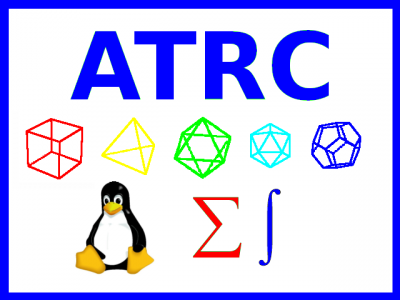Table of Contents
Information Technology Project Management Course
Date : 30 September 2022
Updated : 6 March 2024
By : Khawar Nehal (khawar@atrc.net.pk)
Course Title: IT Project Management
Course Overview:
This course provides an in-depth understanding of project management principles, practices, and tools specifically tailored to IT projects. Students will learn how to initiate, plan, execute, monitor, control, and close IT projects successfully.
Course Objectives:
Understand the fundamentals of project management and its application in IT projects. Learn how to initiate and define IT projects effectively, including stakeholder identification and requirements gathering. Develop skills in project planning, including scope management, scheduling, resource allocation, and budgeting. Gain proficiency in project execution, including team leadership, communication, risk management, and quality assurance. Learn techniques for monitoring and controlling IT projects, including progress tracking, issue management, and change control. Understand the importance of project closure and post-implementation review in IT project management.
Course Outline:
Module 1: Introduction to IT Project Management
Overview of project management concepts Importance of project management in IT Key roles and responsibilities in IT project management
Module 2: Project Initiation
Defining project objectives and scope Stakeholder identification and analysis Requirements gathering and analysis
Module 3: Project Planning
Work breakdown structure (WBS) development Schedule development and management Resource allocation and management Budgeting and cost estimation Risk identification, assessment, and mitigation planning
Module 4: Project Execution
Team development and leadership Communication and collaboration in IT projects Procurement management for IT projects Quality assurance and control
Module 5: Project Monitoring and Control
Progress tracking and performance measurement Issue identification and management Change management and configuration control Earned value management (EVM) for IT projects
Module 6: Project Closure and Post-Implementation Review
Formalizing project closure Lessons learned and knowledge transfer Project documentation and archiving Post-implementation review and project evaluation
Assessment:
Assignments and quizzes to assess understanding of key concepts Group projects or case studies to apply project management principles in real-world scenarios Final exam to evaluate overall comprehension of course material
Conclusion:
Summary of key takeaways from the course Next steps for further learning or certification in IT project management
Prerequisites:
Basic understanding of project management concepts is recommended but not required.
This course outline provides a structured framework for teaching essential IT project management skills and knowledge to students. Instructors can customize the content and activities based on the specific needs and objectives of the course and the target audience.
Course Description:
IT Project Management: Fundamentals overviews the basics of project management. It provides the theory and core methodology you will need to manage projects or participate on project teams.
This course uses openproject as a project management software application
Target Student:
Students enrolling in this course should be planning to lead a project (primary audience) or
serve on a project team (secondary audience).
Prerequisites:
To ensure your success, we recommend you have some working knowledge of computer usage.
The basics are covered in the our OCDL course.
Open Computer Driving License (OCDL)
Benefits:
Students will learn how to use project management techniques to plan, organize, control,
document, and close out their projects successfully and with minimum risk.
Performance Based Objectives :
Upon successful completion of this course, students will be able to:
• Discuss the phases of the Project Management Life Cycle and a project manager's role in each phase.
• List and discuss basic project success criteria and common reasons for project failure.
• Discuss techniques for setting up a strong project team.
• List and discuss elements of a Risk Management Plan.
• Discuss techniques for planning and sequencing project activities, including the
Work Breakdown Structure and the Network Logic Diagram.
• Identify the Critical Path for completing a project on schedule.
• List and discuss the cost elements that should be included in a project budget.
• Discuss techniques for controlling for deviation from budgets and schedules.
• Discuss key elements of project management communications and reporting tools.
• Discuss key activities of project closeout.
Analysis of Requirements
Match competence to scenario
Evaluate a project business case
Stakeholders
Identify and assess stakeholders
Stakeholders
Resource management
Teams
Scope
Define product scope
Project charter
Product and project scope
Decompose product scope into stakeholder requirements
Create WBS and dictionary
Work breakdown structure
Risk Management
Cause-and-effect diagram
Risk register
SWOT analysis
Create risk register
Risk identification and management
ICT Risk Management
Project Risk
The Project Team
The Teamwork Challenge
Selecting Team Members
The Team Charter
Communication
Develop a communication plan
Responsibility assignment (RACI) matrix
Run charts
Project Cycle Optimisation (PCO)
Participatory Impact Pathways Analysis (An approach for developing common understanding and consensus amongst project participants and stakeholders as to how the project will achieve its goal)
Logical framework approach
Project management activities
Project management is composed of several different types of activities such as:
Analysis and design of objectives and events
Planning the work according to the objectives
Assessing and controlling risk (or Risk Management)
Estimating resources
Allocation of resources
Organizing the work
http://en.wikipedia.org/wiki/Work_(project_management)
http://www.projectsmart.co.uk/introduction-to-project-management.html
Acquiring human and material resources
http://www.businessballs.com/freeonlineresources.htm
Assigning tasks
Directing activities
Controlling project execution
Tracking and reporting progress (Management information system)
Analyzing the results based on the facts achieved
Defining the products of the project
Forecasting future trends in the project
Quality Management
Issues management
Issue solving
Defect prevention
Identifying, managing & controlling changes
Project closure (and project debrief)
Communicating to stakeholders
Project management artifacts
The following documents serve to clarify objectives and deliverables and to align sponsors, clients, and project team's expectations.
Project Charter Preliminary Scope Statement / Statement of work Business case / Feasibility Study Scope Statement / Terms of reference Project management plan / Project Initiation Document Work Breakdown Structure Change Control Plan Risk Management Plan Risk Breakdown Structure Communications Plan Governance Model Risk Register Issue Log Action Item List Resource Management Plan Project Schedule Project Status Report Responsibility assignment (RACI) matrix Database of lessons learned Stakeholder Analysis Document Management
These documents are normally hosted on a shared resource (i.e., intranet web page) and are available for review by the project's stakeholders (except for the Stakeholder Analysis, since this document comprises personal information regarding certain stakeholders. Only the Project Manager has access to this analysis). Changes or updates to these documents are explicitly outlined in the project's configuration management (or change control plan).
Project Management tools
Project Management tools include following:
Financial tools
Earned value management Monte Carlo methods in finance
General management tools
- Online tools to run a Project Health Check (Ph-Check tool), take a baseline or checkpoint, or to generate highlight, or status reports.
Scheduling charts
PERT charts Gantt charts Event Chain Diagrams
Related lists
Glossary of project management List of management topics List of production topics List of project management software List of Theory of Constraints topics Timeline of project management
Establish quality metrics
Create an initial schedule and budget
Effort and duration
Estimating effort
Level of accuracy in estimates
Team-based estimation
Scheduling
Estimating cost
Review and disposition a change request
Change management
Plan a project rollout
Testing
Release management
Use metrics to reassess the business case
Delivering business value
The Project Management Life Cycle
What is a Project?
The Project Management Life Cycle
The Role of the Project Manager
Setting Up for Success
The Meaning of Success
What Happens in the Initiation Phase?
Project Definition and Scope
Putting Together a Statement of Work
The Project Charter
The Project Team
The Work Breakdown Structure
Work Package Sequencing
The Project Schedule
The Scheduling Process
Time Estimates
The Project Budget
What is a Budget?
Creating a Preliminary Budget
Budget and Schedule Balancing
Project Tracking and Control
Moving the Project Forward
Monitoring for Project Progress
Earned Value Analysis
Getting Back on Track
Project Reports
Communications Overview
Project Performance Reports
Project Change Requests
Closing
Close out a project
Elements of Closeout
Evaluation of People and Projects
Integration Management
Time Management
Compensation Management
Cost Management
Quality Management
Human Resource Management
Communications Management
Procurement Management
Stakeholder Management
Agile
Scrum
Methodology
- Learn about project management, organizational project management, and project management maturity
- Understand the essentials for effectively managing a project
- Learn a simplified project methodology, including stages and stage gates
- Learn how to start the project right and continue on the right path toward achieving project strategic objectives
- Apply the learning to develop the PM and Project Detailed Plans
- Understand project implementation, control, handover, and closure
Certifications
PMP
prince2
program_management
scrum
APM Certifications
Project, Program & Portfolio Management
PMI Certifications
Contact Information :
What is included :
1 hour of teacher online time per participant.
If participants discuss in a group, the total time available shall increase.
Example : If a group of 10 participants attend a 1 hour discussion, only 6 minutes of teacher time shall be counted from each participant's one hour available.
23 Assignments
23 Quizzes
3 Vivas
1 Online Certificate
1 Printed certificate
Fees
PKR 50,000 per participant
Limited time and limited intake offer
Inside Pakistan : PKR 5,000
Outside Pakistan PKR 6,000
Duration : 2 Months maximum from the start.
This course requires about 115 hours of study. This is about 2 hours per day for 60 days.
Financial aid and student loans also available for cases which need it. Anyone can apply.



